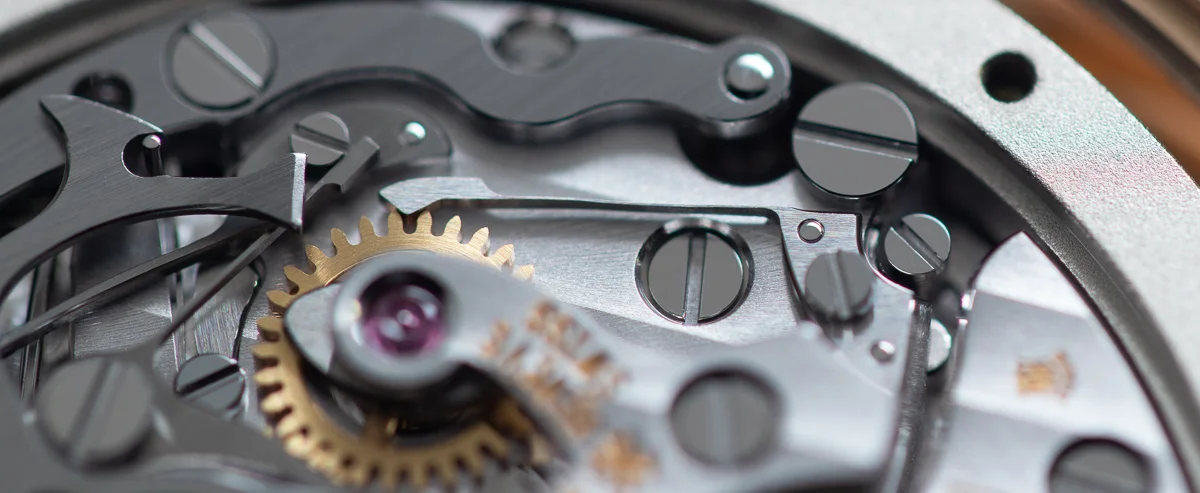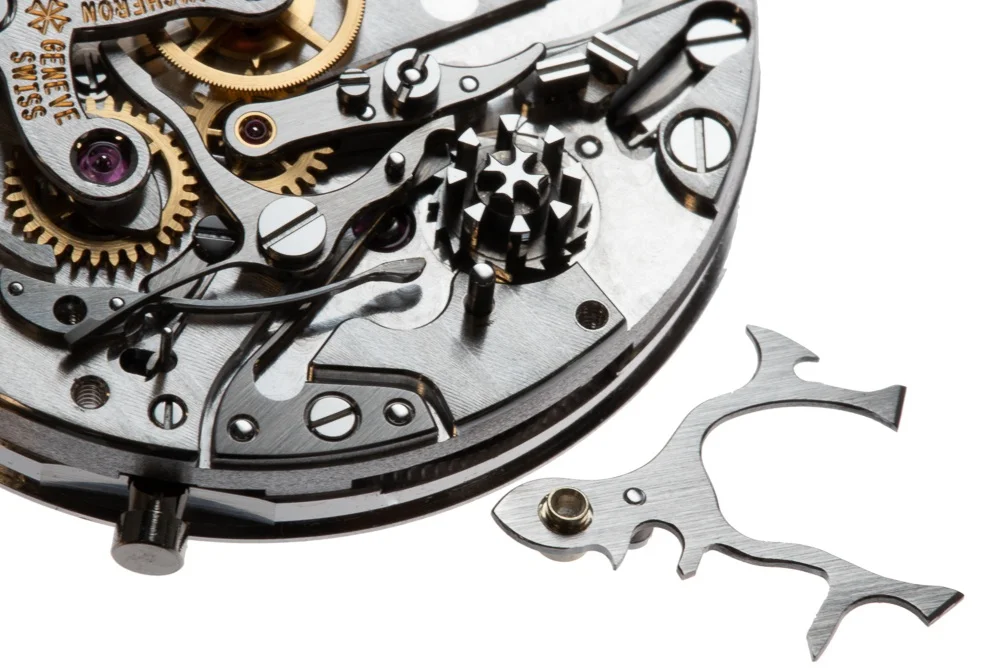The Reason
The Historiques Cornes de vache 1955 is named after the 'Cow Horn' resemblance of the case lugs. It is a modern and upgraded interpretation of one of Vacheron Constantin's iconic watches and carries the Geneva Seal (Poinçon de Géneve).
Introduction/functions
The Historiques Cornes de vache 1955 presented is an 18K (4N) pink gold chronograph with tachometer scale, surrounding the minute track on the dial. This scale tells you directly in relation to the chronograph seconds hand the average speed at which a known distance was covered. If your distance base is one kilometre, the result will be in km/h. For one mile, the result will be in mph. The minute recorder, measures up to 30 minutes.
The case is 38.5 mm in diameter excluding the shoulders, 10.9 mm thick and made in 18K 4N pink gold with sapphire crystals on the front and case back. Water-resistant to 30 meters (3 bar). The calibre reference is 1142. It is a manual-winding movement, 5.57mm in thickness and 27.5mm in diameter. There are 164 components in the calibre, including 21 jewels. The balance vibrates with a frequency of 3 Hz ( 21600 v.p.h ). The power-reserve is approximately 48 hours.
Please move the cursor across the image below, (or by finger on a smart phone), to rotate the watch.
The case back with sapphire crystal is screwed in place using a 10 sided faceted key.
With the case back removed the movement ring acting as a spacer between the inner case and the movement can be viewed. The Movement ring is screwed in place using three stainless steel screws and clamps. The movement is held in to the movement ring by two large headed carbon steel screws viewed below at 1 & 7 o’clock.
Geneva Seal (Poinçon de Géneve), found on the balance cock.
The inside of the case back showing the case serial number, indexing hole for machining and case-makers mark. Finished with a fine circular graining.
The movement removed from the case with the stem returned into its original position.
The underside of the movement ring showing the paddles which are the intermediary levers transmitting the force from the case pushers through to the movement operating levers. Held in place using steel shoulder screws.
The movement removed from the case.
The hands removed from the movement.
The dial removed from the movement.
The minute, hour and constant seconds hand are made from 18k gold. The chronograph seconds and minute recorder hand from hardened carbon steel, polished and blued.
The column wheel (also known as the pillar wheel)
The column wheel is held in place by a shoulder screw made in the form of the the Maltese cross Vacheron Constantin logo. The column wheel is activated/turned by the operating lever which is moved by the 2 o’clock chronograph case pusher. It turns the chronograph on and off, and when ‘off’ allows the 4 o’clock pusher to return to zero the chronograph hands.
The 30-minute recorder wheel indexed by a jumper pawl (spring).
The return to zero mechanism.
The vertical pin holds the hammers, preventing them from returning to zero the chronograph wheels until the 4 o’clock pusher is pressed.
The coupling clutch. The large steel steel lever with visible jewel and smaller gold coloured wheel. This beak of this lever to the right of the image is controlled by the column wheel. Below the beak has dropped between the pillars on the column wheel, and its wheel driven by the upper fourth wheel (to the left) has engaged with the chronograph wheel. When the column wheel turns by one tooth the coupling clutch will move slightly, the beak sliding to the surface of a pillar and the chronograph will stop.
The teeth of the coupling clutch wheel and the chronograph seconds wheel have sharp triangular teeth to ensure that when they engage they mesh easily.
In focus to the left of centre of the image is the minute recorder intermediate wheel, driven every minute by the chronograph seconds wheel finger (which is mounted under the chronograph seconds wheel).
Recto-verso of the movement removed from the movement ring with out dial.
The balance and balance cock removed from the movement.
The balance wheel is free-sprung (no index on the balance cock to change the effective length of the balance spring). The timing is adjusted by screwing the square timing screws in or out evenly on a-posing sides of the balance wheel, to quicken or slow the rate of the balance wheels oscillations.
The Swiss lever (pallets) removed from the movement.
The balance and escapement is normally removed first when servicing a watch movement.
The Swiss lever and its bridge.
The coupling clutch removed.
The double ended spring which acts on the coupling clutch and the operating lever hook, removed.
The main operating lever and its hook removed.
The hammers about to be removed.
The spring remaining on the movement under the hammers pushes the hammers into the centre of the watch to return to zero the chronograph counter wheels, and holds it in place.
The brake removed.
The bridge holding the chronograph seconds and minute recorder wheels removed with the wheels
The 30-minute recorder wheel to the left and the chronograph wheel to the right. Both wheels have a steel heart shaped cam (visible only on the right) which allows the wheels to be returned to zero (centred).
The column wheel about to be removed. The column wheel is in essence the brain of the chronograph which controls the mechanism as the pushers are activated. The shoulder screws holding it in place is in the form of the Vacheron Constantin logo and requires a special screw-driver made for it to be removed and replaced.
The inverse pattern of the cross is used to make the screwdriver blade.
The column and screw removed.
The friction fitted upper fourth wheel which drives the chronograph removed, sitting next to the pivot it usually lives on.
The escape wheel cock removed allowing the wheel to be removed.
The majority of the surfaces are decorated, those visible and hidden. All angles are polished by hand. All assembly also made by hand.
The 3/4 plate now removed showing the going train usually hidden underneath.
The underside of the 3/4 bridge and the main-plate fully dismantled except for the winding/setting mechanism.
Summary
The basic chronograph movement shown was originally designed in the 1940’s by Albert Piguet at the Lémania workshops. The calibre has been upgraded and updated to both follow the Vacheron Constantin design as well as qualify for the Geneva Seal (Poinçon de Géneve). The result is a balanced and modern interpretation of the original Historiques Cornes de vache 1955 made to a superior quality than the original, incorporating higher levels of accuracy, improved finishing and a far more solid and resistant case.
Diverse images of the assembled watch.
To learn more about Vacheron Constantin





















































